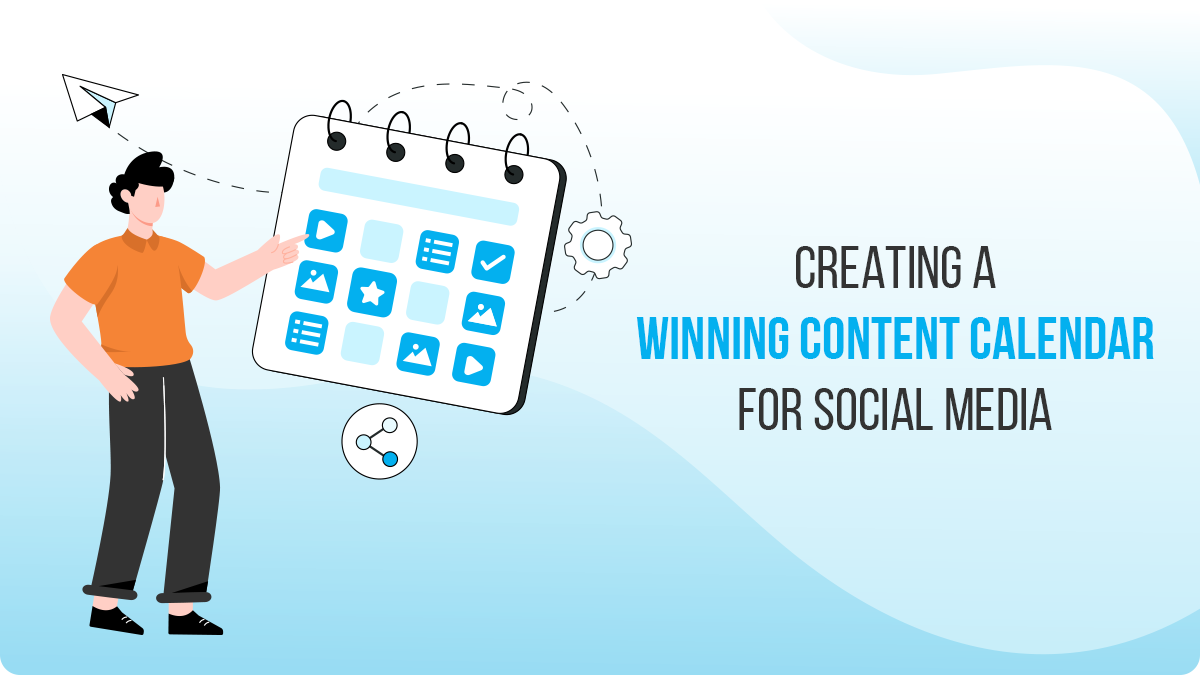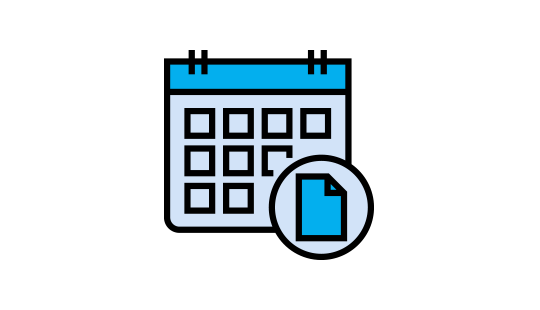In the dynamic and ever-evolving landscape of social media, a well-thought-out content calendar is a powerful tool that can help businesses build a strong online presence, engage their audience, and drive meaningful results. Whether you’re a seasoned social media manager or a small business owner looking to enhance your digital marketing strategy, creating a winning content calendar is essential for success. In this article, we’ll delve into the key steps and considerations to craft an effective content calendar that aligns with your business goals and resonates with your target audience.

What Is a Content Calendar for Social Media?
A social media content calendar is a strategic planning tool used by individuals and businesses to organize, schedule, and manage their social media content across various platforms. It serves as a centralized resource that outlines the types of content to be created, the dates and times for publishing, and the platforms on which the content will be shared. Essentially, a content calendar is a roadmap that guides social media marketing efforts, ensuring consistency, relevance, and efficiency in content distribution.
Key Components of a Social Media Content Calendar:
Content Types:
Define the various types of content you plan to share, such as blog posts, images, videos, infographics, polls, and more. This helps in maintaining a diverse and engaging content mix.
Posting Schedule:
Establish a consistent posting schedule by determining the frequency and timing of your posts. This could be daily, a few times a week, or based on the specific habits of your target audience.
Platform Selection:
Identify the social media platforms that align with your business goals and target audience. Different platforms have unique features and audience demographics, so tailoring your content to each platform is essential.
Content Themes and Pillars:
Outline key themes and content pillars that reflect your brand identity. These could include educational content, behind-the-scenes glimpses, user-generated content, promotions, and more.
Seasonal and Trending Topics:
Incorporate relevant seasonal and trending topics to keep your content timely and aligned with current conversations. This helps capitalize on popular trends and increases the visibility of your content.
Engagement Strategies:
Allocate time for engagement activities, such as responding to comments, messages, and mentions. Actively engaging with your audience fosters a sense of community and strengthens your online presence.
Content Scheduling Tools:
Utilize content scheduling tools like Hootsuite, Buffer, or Later to plan and schedule posts in advance. These tools provide automation, allowing for efficient content distribution and analytics tracking.
Monitoring and Analysis:
Regularly monitor and analyze performance metrics such as reach, engagement, and follower growth. Use insights to assess the effectiveness of your content strategy and make data-driven decisions for future planning.
Understanding the Importance of a Content Calendar
A content calendar serves as the backbone of your social media strategy, providing a structured framework for planning, organizing, and executing your content. It enables you to maintain consistency, stay on top of important dates and events, and strategically align your messaging with your brand identity. A well-organized content calendar can also save time, reduce stress, and ensure that your social media efforts are cohesive and purposeful.
Define Your Objectives and Audience
Before diving into the nitty-gritty of content planning, it’s crucial to establish clear objectives and identify your target audience. Understanding your goals will guide the type of content you create and the platforms you focus on. Equally important is knowing your audience – their preferences, behaviors, and the platforms they frequent. Tailoring your content to resonate with your specific audience will significantly enhance its impact.
Choose the Right Social Media Platforms
Not all social media platforms are created equal, and each has its own unique audience and content style. Research and identify the platforms that align with your business and audience. Whether it’s Instagram, Facebook, Twitter, LinkedIn, or a combination of platforms, your content calendar should be tailored to the characteristics of each channel. Consider the nature of your business, the type of content your audience engages with, and the platform’s features to make informed decisions.
Establish a Consistent Posting Schedule
Establishing a regular posting schedule helps you stay top-of-mind with your audience and builds anticipation for your content. Determine the frequency of your posts – whether it’s daily, a few times a week, or weekly – and stick to it. Consistency not only helps you maintain engagement but also contributes to the algorithmic favorability on many social platforms, increasing the visibility of your content.
Identify Key Themes and Content Pillars
To ensure a diverse and engaging content mix, identify key themes and content pillars that align with your brand and resonate with your audience. These could include educational content, behind-the-scenes glimpses, user-generated content, promotional material, and more. Having a variety of content pillars keeps your feed interesting and caters to different audience preferences. It also allows for a strategic approach to content creation, ensuring that your messaging is well-rounded and not overly focused on one aspect of your business.
Incorporate Seasonal and Trending Topics
It’s imperative to remain current in the rapidly evolving realm of social networking. Keep an eye on seasonal trends, holidays, and industry-specific events that present opportunities for timely and topical content. Incorporate these into your content calendar to capitalize on trending topics and engage with your audience in real-time. Being agile and adaptable in your content planning allows you to take advantage of current conversations and connect with your audience on a deeper level.
Utilize Content Scheduling Tools
To streamline your social media workflow and ensure timely and consistent posting, leverage content scheduling tools. Platforms like Hootsuite, Buffer, and Later allow you to plan and schedule posts in advance, saving you time and ensuring that your content is distributed evenly throughout the week. Scheduling tools also provide valuable analytics and insights, helping you track the performance of your content and make data-driven decisions for future planning.
Engage with Your Audience
Social media is a two-way street, and engagement is a key component of a successful strategy. Allocate time in your content calendar for responding to comments, messages, and mentions. Actively engage with your audience by asking questions, conducting polls, and encouraging user-generated content. Building a genuine connection with your audience fosters brand loyalty and can lead to valuable insights that inform your future content strategy.
Monitor and Analyze Performance Metrics
Regularly monitoring and analyzing performance metrics is essential for refining your content strategy. Most social media platforms provide insights into key metrics such as reach, engagement, and follower growth. Use these analytics to identify high-performing content, understand audience behavior, and refine your approach. Pay attention to which types of content resonate most with your audience and adjust your content calendar accordingly. A data-driven approach ensures that your social media efforts are continually optimized for success.
Stay Agile and Adapt
While a content calendar provides structure and guidance, it’s important to remain flexible and adapt to changing circumstances. Social media trends, algorithm updates, and unforeseen events can impact the effectiveness of your strategy. Stay informed about industry changes, monitor your analytics for shifts in performance, and be prepared to adjust your content calendar accordingly. Agility is a valuable trait in the ever-evolving landscape of social media.
Conclusion
In conclusion, a well-crafted content calendar is a cornerstone of successful social media marketing. By defining your objectives, understanding your audience, and strategically planning your content, you can build a strong online presence, foster engagement, and achieve your business goals. Remember to stay adaptable, embrace data-driven insights, and consistently refine your approach to keep your social media strategy effective and aligned with the ever-changing digital landscape. With a winning content calendar in place, you’ll be well-equipped to navigate the complexities of social media and make a lasting impact on your audience.
We are Atlanta’s Most Acknowledged Digital Marketing Agency
In today’s digital age, your social media presence is your storefront to the world. USSLLC is dedicated to helping you shine in this digital storefront, offering services that encompass content creation, community management, paid advertising, and more. Our goal is simple: to help you boost your brand’s visibility, grow your audience, and increase your ROI.
So, if you’re looking to make a real impact on social media and unlock the full potential of your brand, look no further than USSLLC, Atlanta’s most acknowledged digital marketing agency. Let’s embark on a journey to elevate your social media game and take your brand to new heights.
Contact us today and witness the transformative power of effective digital marketing. Your success is our priority!
